Walking the Caminito del Rey in Spain is a wild mix of jaw-dropping views and a bit of lingering danger from its days as the “world’s most dangerous path.” I just had to find out if this place still lived up to the hype—and if it actually felt as safe as everyone says now.
The walkway clings to the steep walls of a narrow gorge in Málaga, and the scenery is just unreal. After a massive renovation in 2015, Caminito del Rey became totally safe, so now anyone can soak up the views without freaking out.
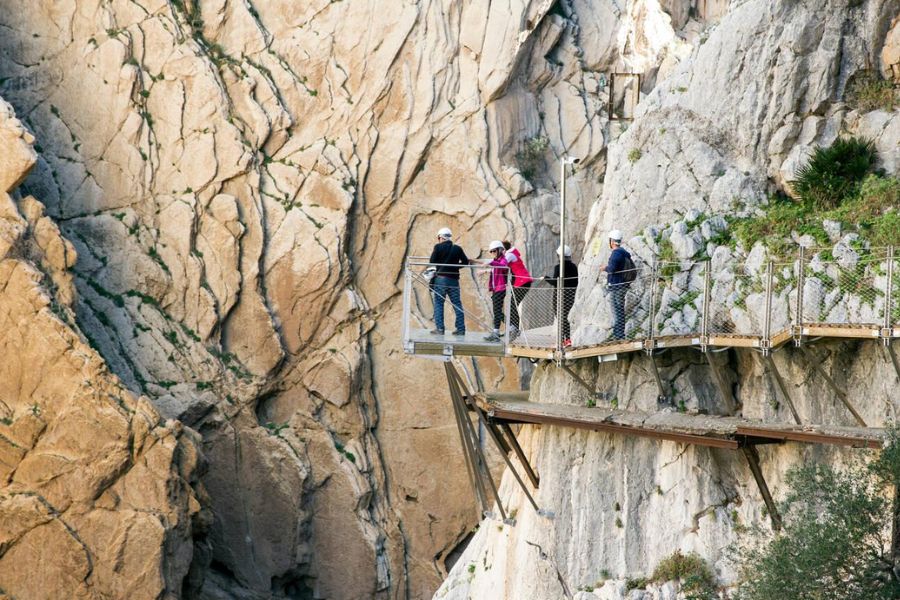
I wanted to know what it felt like to actually step onto this legendary pathway, so I went to see if the thrill matched the stories. Here’s what happened when I tackled Spain’s most talked-about walk.
Unveiling el Caminito del Rey: The History and Its Reputation
El Caminito del Rey sits high above the cliffs in southern Spain, offering more than just epic scenery. Its story is packed with weird and fascinating details, from its birth over a century ago to its reputation for both fear and beauty.
Origins of the Path
Between 1901 and 1905, workers built el Caminito del Rey. They needed a way for engineers and laborers to travel between two hydroelectric plants—Chorro Falls and Gaitanejo Falls—right along the steep walls of El Chorro Gorge.
They used concrete slabs, bolting them right to the rock. Most of the path is barely a meter wide. When I first stepped onto those narrow boards, I couldn’t help but imagine the original workers up there with nothing but ropes and planks. Honestly, that’s humbling.
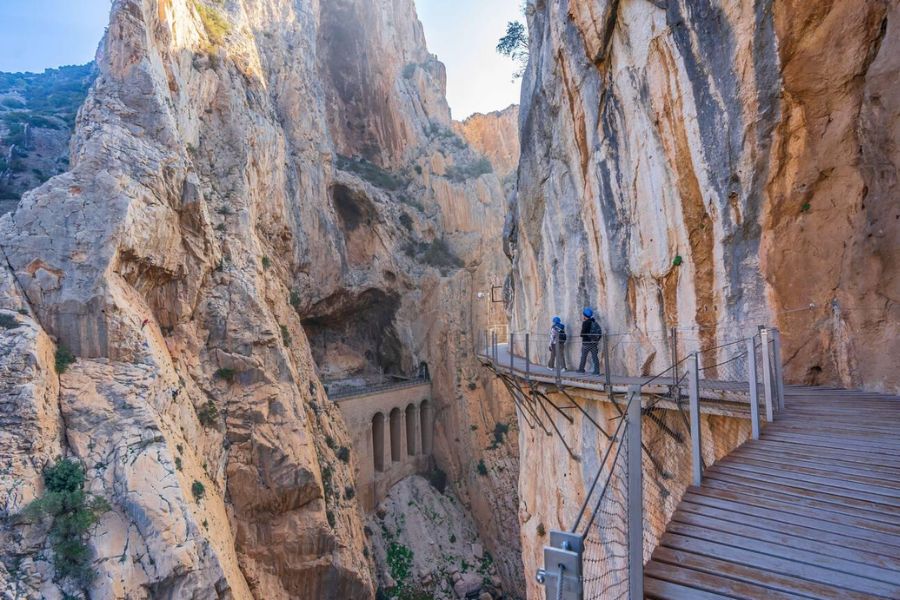
King Alfonso XIII himself walked the finished path in 1921 to open the new dam at Conde del Guadalhorce. That’s how it got the name: “The King’s Little Pathway.” Locals just call it “el Caminito.”
Hydroelectric Power Plants and Their Impact
The hydroelectric plants shaped every twist of Caminito. Engineers needed a safe way to haul materials and check on the water channels high above the gorge. Chorro and Gaitanejo power plants ended up giving the region a real boost—more energy, more jobs, more life.
As I walked, I spotted old pipes and stone channels still clinging to the cliffs next to the new boardwalks. Seeing industry, nature, and pure gutsy engineering all mashed together made me respect those workers even more. Even now, rusted rails and battered supports mark the route, quietly telling stories of hard labor and wild ideas.
Legacy as the ‘World’s Most Dangerous Path’
For years, people called el Caminito del Rey the “world’s most dangerous path.” The old walkway fell apart—missing rails, crumbling concrete, and straight-up holes. Accidents and falls in the late ‘90s and early 2000s only made its reputation worse.
Thrill-seekers and tourists kept coming anyway. I’d heard stories of people tiptoeing over exposed beams just for the adrenaline rush. Eventually, local authorities shut it down.
Then came the big restoration. In 2015, the path reopened with sturdy fences, a solid surface, and strict visitor limits. Now, people like me can enjoy every breathtaking step—no daredevil moves required.
Preparing for the Caminito del Rey Adventure
Getting ready for Caminito del Rey takes a little planning. I booked tickets, packed smart, and figured out the trip from Málaga so my day on the walkway went off without a hitch.
Booking Tickets and Trip Planning
You really need to book tickets in advance. They only let in a set number of people each day, so spots fill up, especially in spring and fall. I grabbed mine online through the official site for €10. You can pay a bit more for a guided tour if you want.
They emailed me my reservation, complete with a QR code I saved on my phone (or you can print it). The ticket has a set time, and getting there early made things easy—latecomers might not get in. I checked shuttle bus times too since the trail is one-way, and you’ll want to plan your ride back.
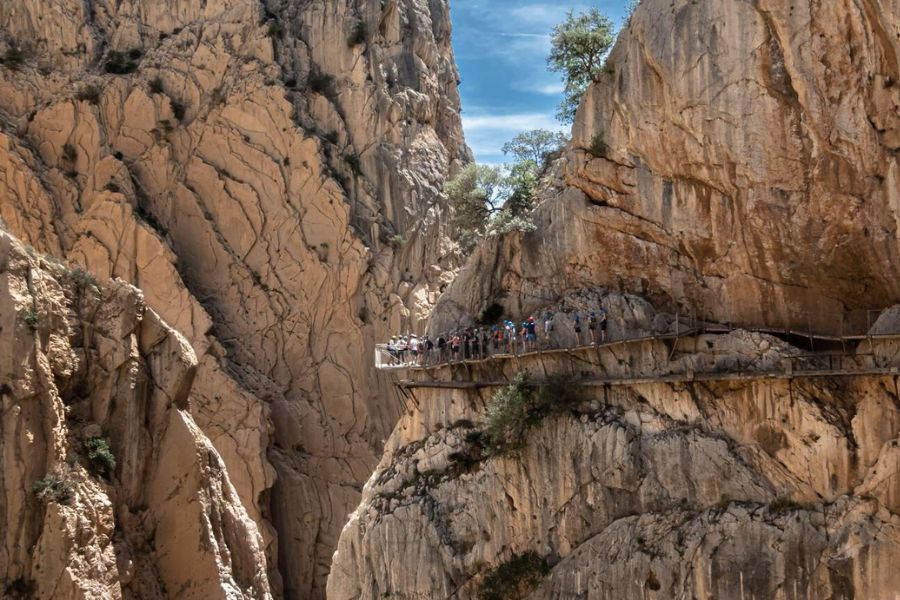
If you visit in summer, it gets hot, so I started early. April or October are cooler and not so busy.
What to Pack for Safety and Comfort
The trail is about 7 km, with parts hanging right over the river. Good shoes are a must—I wore closed-toe hiking shoes with grip, which is actually required. Sandals aren’t allowed. I tossed a lightweight backpack over my shoulder, packed water (about a liter), snacks, sunscreen, and a hat.
At the entrance, staff hand out helmets for safety—no exceptions. I wore light clothes that dried quickly, which helped when I started sweating or when a drizzle came through. My phone was ready for photos, and I brought a power bank so I wouldn’t run out of juice. I kept my ticket handy and carried a little cash for shuttles or snacks.
How to Get To el Caminito del Rey From Málaga
Getting to Caminito del Rey from Málaga turned out to be pretty easy. I hopped on a local train from María Zambrano station to El Chorro. The ride took about 40 minutes. There’s a bus too, but the train’s faster and runs more often.
When I got to El Chorro, clear signs pointed me to the shuttle bus or taxis heading to the trail. Buses run between both entry points (north and south) and are marked for hikers. I paid the driver a few euros for my shuttle ticket. If you drive, there’s parking at both ends—showing up early meant I got a spot.
I just followed the signs and chatted with other travelers. Even as a first-timer in the region, I didn’t get lost or stressed.
My Journey Walking the Caminito del Rey
Sunlight hit the cliffs as I walked toward El Caminito del Rey. The whole thing felt like a mix of awe and excitement, but the solid, safe walkway kept my nerves in check.
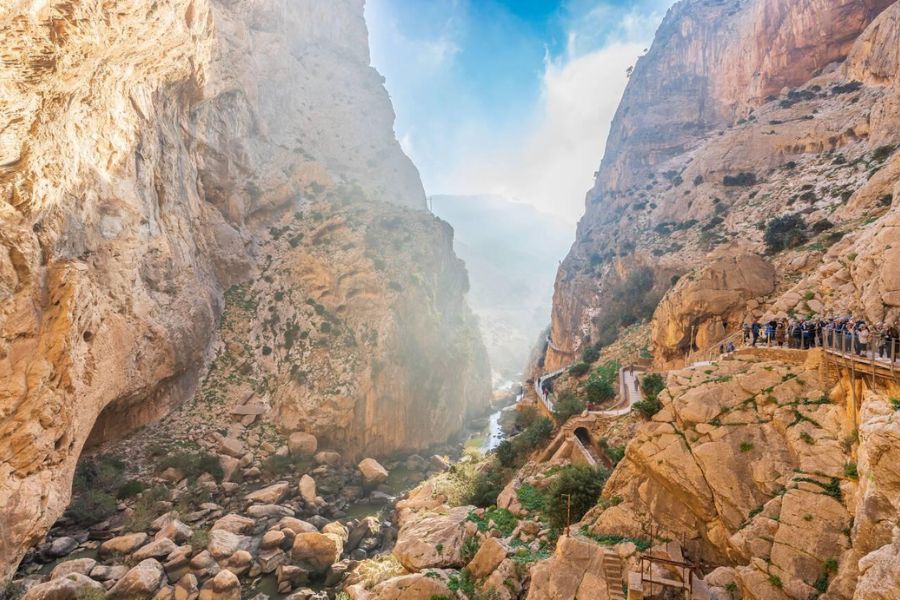
First Impressions and Arrival
At the entrance, I saw those sheer drop-offs and the rough landscape of Gaitanes Gorge right away. A staff member handed me a helmet, which honestly made me feel a little better.
The path began with a gentle walk through pine trees, slowly opening up to the huge cliffs. Signs along the way shared quick history bits, like how dam workers built the path in the early 1900s. Old, crumbling concrete supports sat next to new wooden walkways—it’s wild how much has changed.
When I reached the official start, I just had to stop and take it in. Metal mesh under my feet felt solid, but looking down? Dizzying views of the river way below. Even with people ahead and behind, it never felt packed or rushed.
Navigating the Route: Highlights and Thrills
Crossing the hanging bridge over the gorge, my heart definitely skipped. The wind tugged at my jacket, and I had to pause to stare down at the turquoise water. It was a rush, but the handrails and reinforced walkways made me feel secure the whole time.
Some of my favorite moments came at viewpoints where the gorge squeezed in so tight that sunlight barely made it through. I watched birds circling above and spotted wildflowers clinging to the rocks.
I snapped a bunch of photos at the glass-bottom balcony that juts out over the valley. It’s the perfect spot to rest, soak up the views, and chat with other walkers. The route finished with an easy stroll through open countryside—a quiet end after all that drama.
Staying Safe on the “World’s Most Dangerous Path”
Walking El Caminito del Rey now is still a thrill, but it’s nothing like the risky adventure it used to be. Careful renovations and new rules mean hikers get epic views without flirting with disaster.
Modern Safety Measures and Renovations
When I stepped onto the wooden boardwalk, I could tell right away how secure everything was. Back in the day, El Caminito del Rey got its scary nickname because of broken planks and missing rails. Now? Total upgrade.
They rebuilt the whole path in 2015. Sturdy metal rails line every walkway, and the new wooden planks don’t get slippery, even when it rains. You don’t need a safety harness anymore, but helmets are still a must—they hand them out at the entrance.
Staff keep an eye on everyone and answer questions. If the weather turns nasty—heavy rain or strong wind—they shut the trail down.
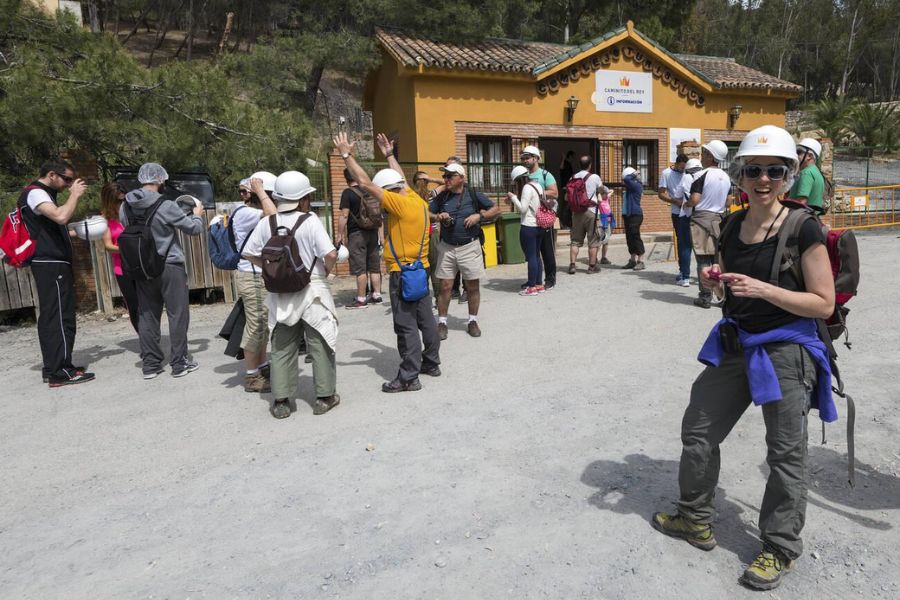
They limit daily entry, so it never gets crowded. I saw clear signs everywhere explaining what to expect and how to stay safe, which honestly helped me relax.
Physical Demands and Health Considerations
Even though it’s much safer, El Caminito del Rey isn’t just a casual stroll. The whole thing is about 7.7 km (around 4.8 miles). Most of the walk sticks to narrow paths along the cliff, with steep stairs at both ends. Some parts rise way above the river, so you need a steady step.
There are benches if you need to rest. I brought water, sunscreen, and a hat—the Andalusian sun is no joke, even in spring. Grippy shoes are key; smooth soles can get slippery.
The hike isn’t for people with serious heart or breathing problems or anyone with bad vertigo. Kids under eight can’t go. When you book, they give you a time slot, so there’s no rushing and you can just enjoy the views—and catch your breath if you need to.
Exploring Nearby Attractions and Where to Stay
I realized there’s way more to this area than just the Caminito. Nearby villages, pretty sights, and comfy places to stay make this trip easy to plan and way more fun.
Villages and Sights Around el Caminito del Rey
After the walk, I wandered into Ardales to unwind. The town’s whitewashed streets, local bakeries, and tiny cafés were perfect for a coffee and a sweet treat.
El Chorro’s train station was just a short drive away, making travel simple. I watched rock climbers there and chilled by the reservoir. The area has lakes all around—great for swimming or picnics when it’s warm. The turquoise water at Embalse del Conde de Guadalhorce was gorgeous and surprisingly quiet.
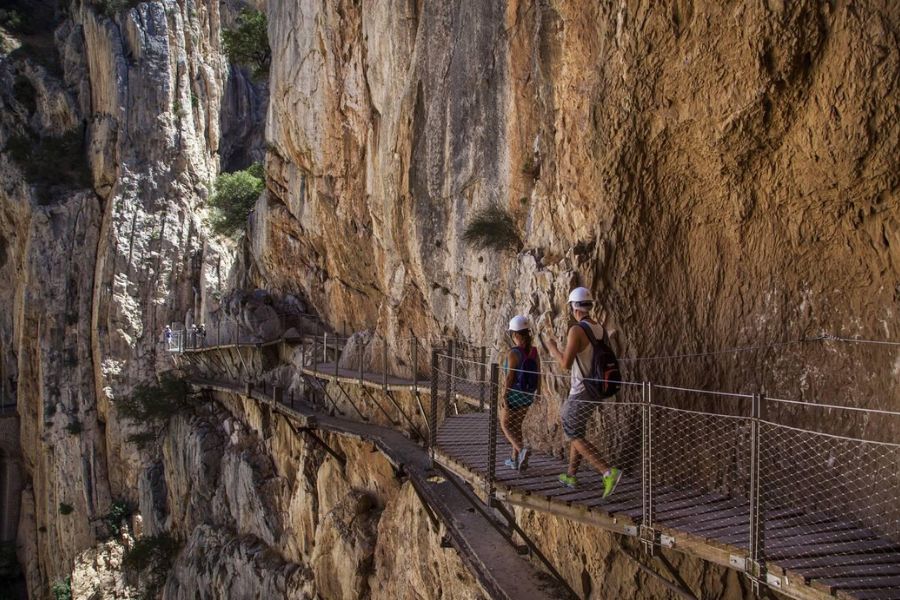
If you love history, check out the ruins of Bobastro nearby. Imagining life in that ancient Moorish castle was an unexpected highlight.
Accommodation Tips and Recommendations
Honestly, finding a place to stay turned out to be pretty simple, whether I looked in Ardales, El Chorro, or even Malaga city. I ended up booking a guesthouse in Ardales since I wanted to stay close to the trail.
Starting my hike early felt so much easier that way, with almost no hassle. Those family-run hostales had a cozy, homey vibe, and most of them served a basic breakfast.
If you’re after a bit more comfort, you can check out the lakeside hotels near El Chorro. I loved the beautiful views and the peaceful setting there.
Malaga, on the other hand, has a bunch of boutique hotels and budget places. It’s easy to mix city exploring with a trip to Caminito del Rey if you stay there.
I found that booking ahead—especially during spring or fall—gave me more options and better prices. Here’s a quick comparison:
| Location | Main appeal | Recommended for |
|---|---|---|
| Ardales | Village charm, close | Early hikers, quiet stays |
| El Chorro | Nature, lakes, views | Adventurers, couples |
| Malaga | City life, connections | Culture lovers, families |
No matter where I stayed, the friendly hosts and tasty food really made the trip feel special.

